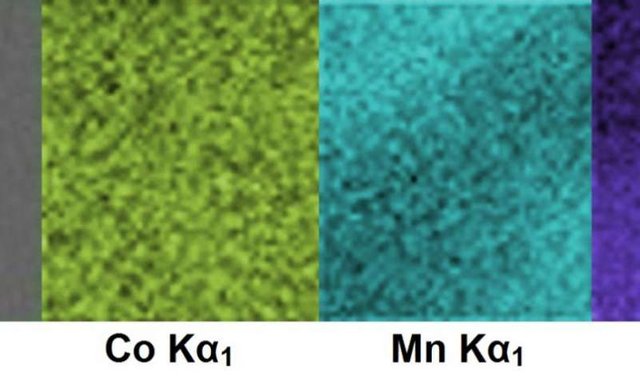Computers create recipe for two new magnetic materials

From Phys.org
Material scientists have predicted and built two new magnetic materials, atom-by-atom, using high-throughput computational models. The success marks a new era for the large-scale design of new magnetic materials at unprecedented speed.https://phys.org/news/2017-04-recipe-magnetic-materials.htmlAlthough magnets abound in everyday life, they are actually rarities—only about five percent of known inorganic compounds show even a hint of magnetism. And of those, just a few dozen are useful in real-world applications because of variability in properties such as effective temperature range and magnetic permanence.
The relative scarcity of these materials can make them expensive or difficult to obtain, leading many to search for new options given how important magnets are in applications ranging from motors to magnetic resonance imaging (MRI) machines. The traditional process involves little more than trial and error, as researchers produce different molecular structures in hopes of finding one with magnetic properties. Many high-performance magnets, however, are singular oddities among physical and chemical trends that defy intuition.
In a new study, materials scientists from Duke University provide a shortcut in this process. They show the capability to predict magnetism in new materials through computer models that can screen hundreds of thousands of candidates in short order. And, to prove it works, they've created two magnetic materials that have never been seen before.
The results appear April 14, 2017, in Science Advances."Predicting magnets is a heck of a job and their discovery is very rare," said Stefano Curtarolo, professor of mechanical engineering and materials science and director of the Center for Materials Genomics at Duke. "Even with our screening process, it took years of work to synthesize our predictions. We hope others will use this approach to create magnets for use in a wide range of applications."
The group focused on a family of materials called Heusler alloys—materials made with atoms from three different elements arranged in one of three distinct structures. Considering all the possible combinations and arrangements available using 55 elements, the researchers had 236,115 potential prototypes to choose from.
To narrow the list down, the researchers built each prototype atom-by-atom in a computational model. By calculating how the atoms would likely interact and the energy each structure would require, the list dwindled to 35,602 potentially stable compounds.
From there, the researchers conducted a more stringent test of stability. Generally speaking, materials stabilize into the arrangement requiring the least amount of energy to maintain. By checking each compound against other atomic arrangements and throwing out those that would be beat out by their competition, the list shrank to 248.
Follow @contentjunkie to stay up to date on more great posts like this one.

brb buying titanium.
This post has been ranked within the top 50 most undervalued posts in the first half of Apr 17. We estimate that this post is undervalued by $1.03 as compared to a scenario in which every voter had an equal say.
See the full rankings and details in The Daily Tribune: Apr 17 - Part I. You can also read about some of our methodology, data analysis and technical details in our initial post.
If you are the author and would prefer not to receive these comments, simply reply "Stop" to this comment.